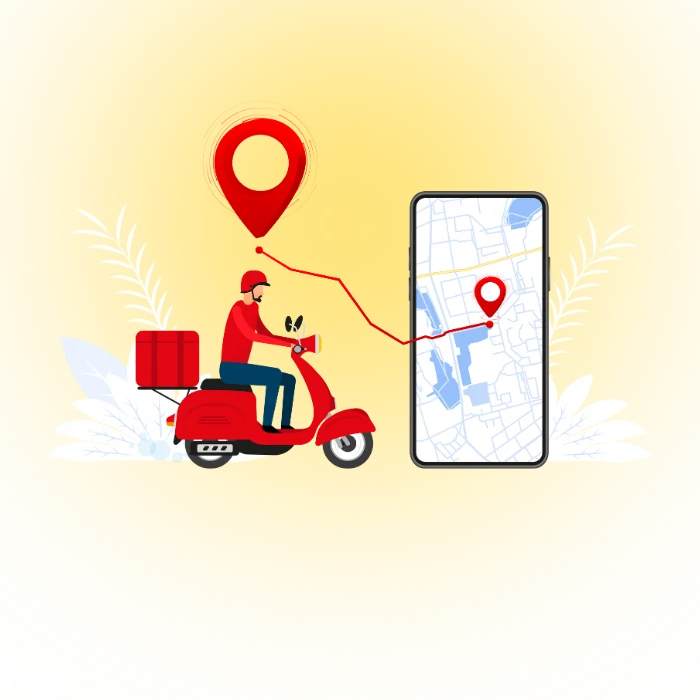Social media mobile apps are must-haves for any established social platform or community looking to better engage users. However, developing custom social apps requires a significant investment of time and capital. In this comprehensive guide, we’ll examine the key factors that determine social media app development costs.
Why Do Social Platforms Need Mobile Apps?
Before diving into the costs, it’s worthwhile looking at why social media sites and communities need to invest in custom mobile apps in addition to their web presence:
Increased Engagement – Apps enable push notifications to drive habitual daily usage. Mobile apps have 5x higher user retention rates than websites.
Differentiated Experience – Apps allow delivering UI/UX tailored to mobile that’s smoother than a mobile web version. This improves stickiness.
Access Offline – Apps can work offline and sync data later. This allows usage with limited connectivity. Web relies on constant connectivity.
Tapped Into Native Features – Apps can use full native device capabilities like camera, geolocation, Apple/Google Pay, Siri shortcuts, etc.
Improved Discoverability – Apps appear in major app marketplaces where users actively search for new apps. Easier to discover than just via the web.
User Growth – The typical benchmark is +10% more monthly active users and 2x higher engagement for apps vs just the web.
Monetization – More engaged users and the ability to test in-app purchases, premium tiers, etc leads to higher monetization.
Data Access – Mobile apps provide fuller technical data on user engagement behaviors compared to the web.
Branding – Well-designed apps strengthen brand image and mindshare through valuable real estate on users’ home screens.
For these reasons, social platforms need mobile apps in addition to mobile-optimized websites to fulfill their true potential. But how much should you budget for social media app development?
Key Factors That Determine Social Media App Costs
Social media app development costs can vary widely based on the app’s complexity and the features required. Here are the key determinants of the overall cost of building a custom social app:
Platforms Supported
Supporting both major mobile platforms – iOS and Android – is a must for reaching all users. This requires either building two native apps or a cross-platform app using tools like React Native. Expanding to tablet support raises scope too.
App Types
A customer-facing social app for end users is just one part. Many social platforms also need admin/moderation apps, separate apps for content creators, and APIs for third-party integrations: the more app types, the greater the overall complexity.
Visual Design Needs
More UI/UX customization driven by brand requirements raises design time versus using configurable templates and standard UI elements. Custom illustrations and animations also add costs.
Feature Set
Capabilities like advanced analytics, gamification, messaging, groups, friend discovery, multimedia content, AI recommendations, editing tools, etc all add development work beyond basic browsing, liking, and commenting features.
Content Types
Supporting diverse media like video, audio, images, live streaming, Story copies, and more adds complexity for managing, rendering, embedding, optimizing, and sharing mixed content types.
Personalization
Highly tailored experiences based on user data and behavior, content recommendations, notifications, deep linking, etc require significant backend logic beyond generic flows.
Third-Party Integrations
API integration with other tools for things like analytics, communication, content management, and infrastructure services involves additional development and maintenance.
Security Needs
Measures like role-based access, moderation capabilities, restrictions on data access, and encryption if sensitive info expands an app’s security considerations and testing required.
Server Infrastructure
If new server-side infrastructure is needed to host and deliver social content, comments, digital assets, user data, etc this adds major setup costs beyond just the mobile apps.
Estimating Cost by Social App Type
Given the variables involved, social media app development costs can range from tens of thousands to millions based on the app’s scale and functionality. Some typical cost ranges:
Simple Social Sharing App
A basic social app with features for creating a profile, posting photos/updates, following other users, and commenting could be built for $30,000 to $70,000.
This assumes 1-2 platforms, relatively simple features, and off-the-shelf infrastructure.
Robust Social Community App
A more full-featured social platform enabling video/audio content, groups, chat, interactive posting, algorithmic feeds, etc can run $70,000 to $150,000+.
The expanded features and infrastructure for multimedia content raise the costs.
Enterprise Social Network App
For an organization, university, or workplace building their own large-scale internal social network with custom features aligned to their needs, costs often exceed $150,000+.
Rigorous security controls, custom designs aligned to brand guidelines, and complex integrations influence costs.
For very large public social media apps with millions of users, development budgets can run into the millions. But for most organizations, the above ranges cover common scenarios.
Strategies for Controlling Social App Costs
When commissioning social app development, apply the following practices to optimize costs:
Build a minimal viable product (MVP) first with core features only
Use agile process to add functionality iteratively
Carefully prioritize must-have features and defer nice-to-haves
Consider configurable no-code app builders before custom development
Use templated and reusable components over extensive one-off UI code
Evaluate cloud-based app templates that get you 80% there faster
Use platform ecosystems like Apple’s CoreML for prebuilt components
Allocate budget for effective app store optimization (ASO)
Plan for ongoing costs beyond launch: server fees, maintenance, enhancements
Building the perfect social app people love using requires striking the right balance between budget considerations and usability. Focus energy on optimizing the most important user journeys and social interactions at launch, then evolve from there.
Hidden Costs to Avoid
Beyond the major technical factors, there are some “hidden” costs that social media platforms often underestimate or overlook when budgeting for app development:
Marketing and User Acquisition
Attracting users to download and consistently use your app requires significant marketing spend for advertising, optimizing app store listings, social promotion, and branding. Allocate at least 15-20% of the development costs for user acquisition.
Testing and Bug Fixes
Extensive real-user testing is required to catch bugs and UX issues before launch. Maintaining apps also requires ongoing resources for fixing issues and monitoring crashes. These personnel costs add up.
Server and Infrastructure Scaling
App usage will likely exceed initial server capacity estimates. Plan for expanding cloud infrastructure to support growth in users, bandwidth, and data storage needs over time.
Feature Additions and Changes
Once released, stakeholders will inevitably request enhancements and changes based on user feedback and new initiatives. This continuous improvement process has perpetual costs.
Platform Maintenance and Upgrades
As Apple, Google, and other platforms issue OS updates and API changes, your apps will require updating and testing to maintain compatibility and stay compliant.
Technical Debt Management
Long-term app sustainability requires periodically refactoring code or reframing architectures that have accumulated excessive technical debt. This involves larger investments.
Avoiding these hidden costs is difficult, but anticipating them allows more accurate budget planning. Work closely with development teams to capture all considerations beyond just app builds.
Ongoing Cost Considerations
Once a social media app launches and gains traction, ongoing costs accumulate over time:
App store annual fees – $99 for iOS, $25 for Android
Added infrastructure to scale – $200+ monthly
Ongoing developer costs – $5000+ monthly average
New feature enhancements – $1500+ per item
Fixing bugs and issues – $2000+ monthly
API costs like bandwidth usage fees – Variable
Marketing and user acquisition – 15-20% of dev cost
Technical debt paydown – Occasional larger investments
Plan not just for launch costs but also annual budget for improvements and technical upkeep.
Optimizing Long-Term Costs
While ongoing costs are inevitable, focus on the following areas to optimize expenses over the lifespan of your social apps:
Prioritize Feature Requests
Institute a structured intake process for new feature requests based on product roadmap priorities. Limiting scope creep prevents uncontrolled cost growth.
Scale Infrastructure Judiciously
Monitor traffic, storage, and bandwidth needs diligently each month. Right-size cloud capacity based on actual usage trends rather than guesswork.
Automate Testing
Automated testing reduces QA time otherwise spent manually validating new features and upgrades. This optimizes dev team productivity.
Scrutinize Staffing Levels
Audit if development teams are right-sized for ongoing needs. Scale up or down depending on volume and types of enhancement requests.
Use Data Analytics
Analyze usage metrics constantly for insights to guide UX enhancements and new capabilities that will maximize user value.
Remain Adaptable
Social app markets move quickly. Stay nimble to add capabilities like live video, AR, new content formats, etc based on how engagement evolves.
With some discipline around smart processes and capacity planning, post-launch social app costs can be managed without sacrificing innovation.
Key Considerations When Estimating Costs
Let’s summarize the main learnings on budgeting for successful social media app development:
Supporting both major mobile platforms increases costs
More custom designs and branding raise development time
Advanced features beyond basics expand the scope significantly
Integrations with third-party tools add complexity
Factor in any needed content infrastructure beyond just mobile apps
Phased rollouts allow launching with critical features first
Ongoing costs beyond launch like enhancements, marketing need planning
“Hidden” costs also need inclusion like testing, infrastructure, technical debt
Social apps can require considerable capital, but increased user engagement invests pays off long-term. Focus on delivering core social interactions first before considering advanced ancillary functionality.
FAQs
How To Create A Social Media App?
To create a social media app you need to define your target audience and core features, design a user-friendly interface, choose the right technology stack, develop and test the app, and launch with marketing support.
What is the required team size for social media app development?
The required team size for social media app development typically includes 1–2 UI/UX designers, 2–3 mobile developers, 1–2 backend developers, 1 QA tester and project manager.
What is the average cost to build social media app?
Average cost to build a social media app ranges from $10,000 to $50,000 or more. Final cost fully depends on features, platform (iOS, Android, or both), design complexity and development team location.
How can i reduce the cost of making social media app?
You can reduce the cost of making a social media app by starting with an MVP (Minimum Viable Product), using cross-platform development tools leveraging pre-built templates or plugins and outsourcing to experienced developers.
How much time it will take to build social media app?
Building a social media app typically takes between 2 to 4 months for a minimum viable product (MVP) with core features like user profiles, newsfeed, chat, and notifications. Complex social media app development can take 6 to 9 months.
What Type of Top Technologies can be used to develop Social Media Apps?
Top technologies for developing social media apps include React Native or Flutter for cross-platform mobile development. Api can be developed using .Net, Node.js or Django.






